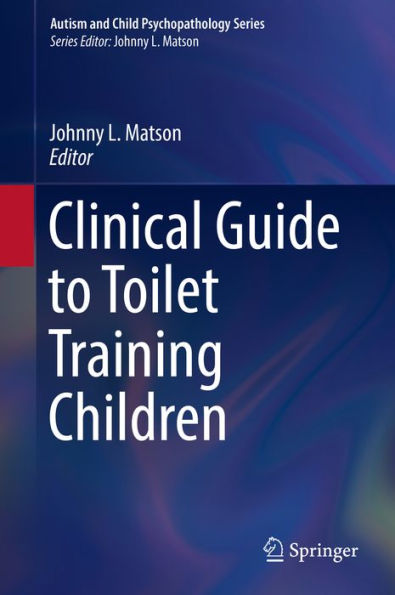This book offers a comprehensive overview of the universal issue of toilet training in children and explores issues that need to be considered by clinicians and other professionals. The book begins with a historical overview of the field, including origins and reviews of current practices. It discusses various toileting problems and their side effects, risk factors, normal developmental milestones in toileting, and theories of toileting. Chapters identify behavior problems (e.g., self-injury, noncompliance) as well as medical conditions (e.g., diabetes, constipation) that can affect continence, with proven strategies for addressing these challenges in toilet training children, including those with intellectual and developmental disabilities. The book concludes with a discussion of the strengths of current toilet training practices as well as suggestions for areas where continued improvement is required.
Topics featured in this book include:
· Complications and side effects associated with the lack of toileting skills.
· Technology used in toilet training.
· Applications of operant-based behavioral principles to toilet training.
· Toilet training strategies involving modeling and modifications of the physical environment.
· Toilet training children with physical disabilities.
The Clinical Guide to Toilet Training Children is a must-have resource for researchers, graduate students, clinicians, and related therapists and professionals in clinical child and school psychology, pediatrics, family studies, developmental psychology, nursing, social work, and behavioral therapy/rehabilitation.
This book offers a comprehensive overview of the universal issue of toilet training in children and explores issues that need to be considered by clinicians and other professionals. The book begins with a historical overview of the field, including origins and reviews of current practices. It discusses various toileting problems and their side effects, risk factors, normal developmental milestones in toileting, and theories of toileting. Chapters identify behavior problems (e.g., self-injury, noncompliance) as well as medical conditions (e.g., diabetes, constipation) that can affect continence, with proven strategies for addressing these challenges in toilet training children, including those with intellectual and developmental disabilities. The book concludes with a discussion of the strengths of current toilet training practices as well as suggestions for areas where continued improvement is required.
Topics featured in this book include:
· Complications and side effects associated with the lack of toileting skills.
· Technology used in toilet training.
· Applications of operant-based behavioral principles to toilet training.
· Toilet training strategies involving modeling and modifications of the physical environment.
· Toilet training children with physical disabilities.
The Clinical Guide to Toilet Training Children is a must-have resource for researchers, graduate students, clinicians, and related therapists and professionals in clinical child and school psychology, pediatrics, family studies, developmental psychology, nursing, social work, and behavioral therapy/rehabilitation.

Clinical Guide to Toilet Training Children
261
Clinical Guide to Toilet Training Children
261eBook (1st ed. 2017)
Related collections and offers

Product Details
| ISBN-13: | 9783319627250 |
|---|---|
| Publisher: | Springer-Verlag New York, LLC |
| Publication date: | 10/04/2017 |
| Series: | Autism and Child Psychopathology Series |
| Sold by: | Barnes & Noble |
| Format: | eBook |
| Pages: | 261 |
| File size: | 624 KB |
